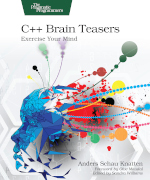You've answered 0 of 187 questions correctly. (Clear)
WARNING: This question has been retracted, and should not be part of new quizzes. You're on this page because you're taking an old quiz which includes this question, or have followed an old link.
Reason for retraction:
This question assumes that an unsigned int uses n bits for the value, whereas a signed int needs one bit for the sign, and has n-1 bits left for the value. However, one could imagine a crazy implementation that also uses n-1 bits for unsigned ints, and just pads the remaining bit. That would be crazy, but conforming to the standard.
This was reported by Johannes Schaub on Twitter.
To get past this question, enter 0 for the output.
Question #176 Difficulty: 
According to the C++23 standard, what is the output of this program?
#include <limits>
#include <iostream>
int main() {
int sig = std::numeric_limits<int>::digits;
int usig = std::numeric_limits<unsigned int>::digits;
std::cout << (sig == usig);
}
Hint:
int and unsigned int occupy the same amount of storage. int is signed.
Problems? View a hint or try another question.
I give up, show me the answer (make 3 more attempts first).
Mode : Training
You are currently in training mode, answering random questions. Why not Start a new quiz? Then you can boast about your score, and invite your friends.
Contribute
C++ Brain Teasers
Get the book, support the site!
